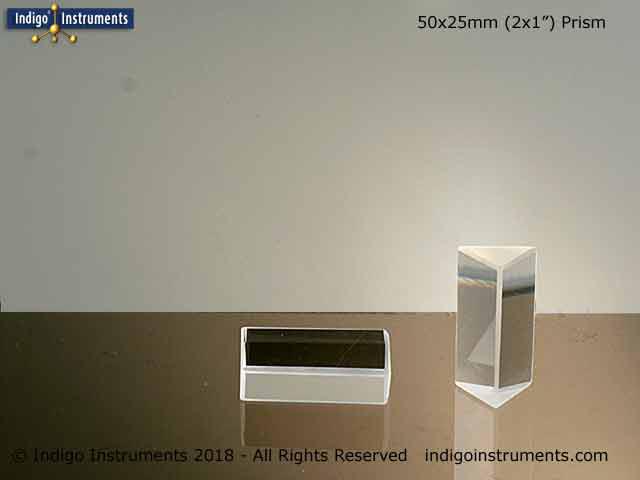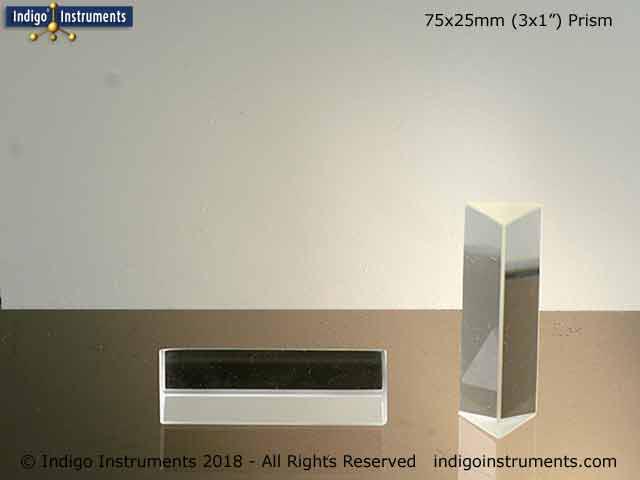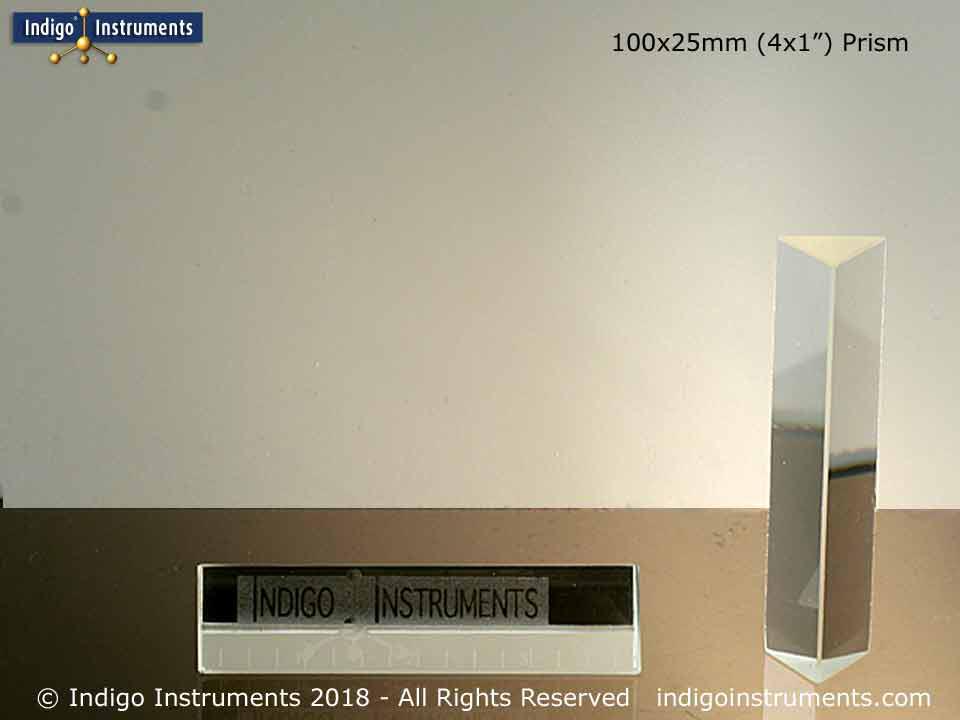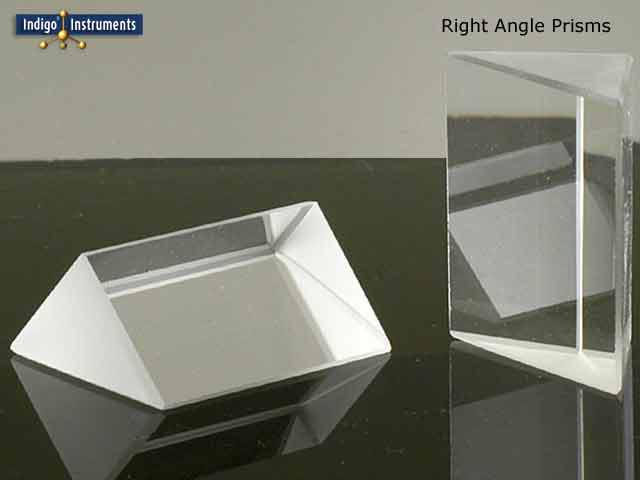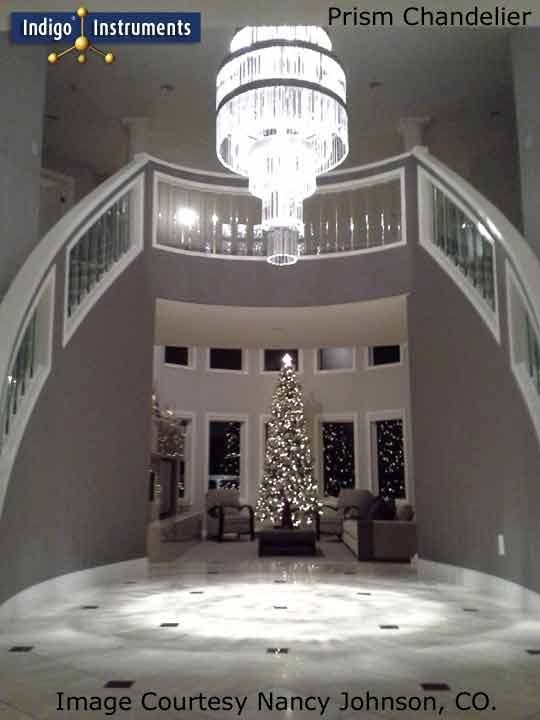Triangular Light Dispersion Glass Prisms
Indigo™ triangular glass prisms for white light dispersion and retroreflection.
Use for science lab demonstrations experiments or unique custom imprinted promotional gift items.
Understanding the visible light portion of the electromagnetic spectrum is a fundamental requirement of the basic sciences. This applies to physics & the spectroscopic analysis of stars, chemical reactions & the biology of photosynthesis & vision.
Sir Isaac Newton first demonstrated the dispersion of sunlight into the familiar rainbow component colors of violet, blue, green, yellow, orange and red using a triangular/equilateral glass prism. Glass prisms are better suited than acrylic prisms for experiments because of their higher refractive index for shorter wavelength blue light to longer wavelength red light.


